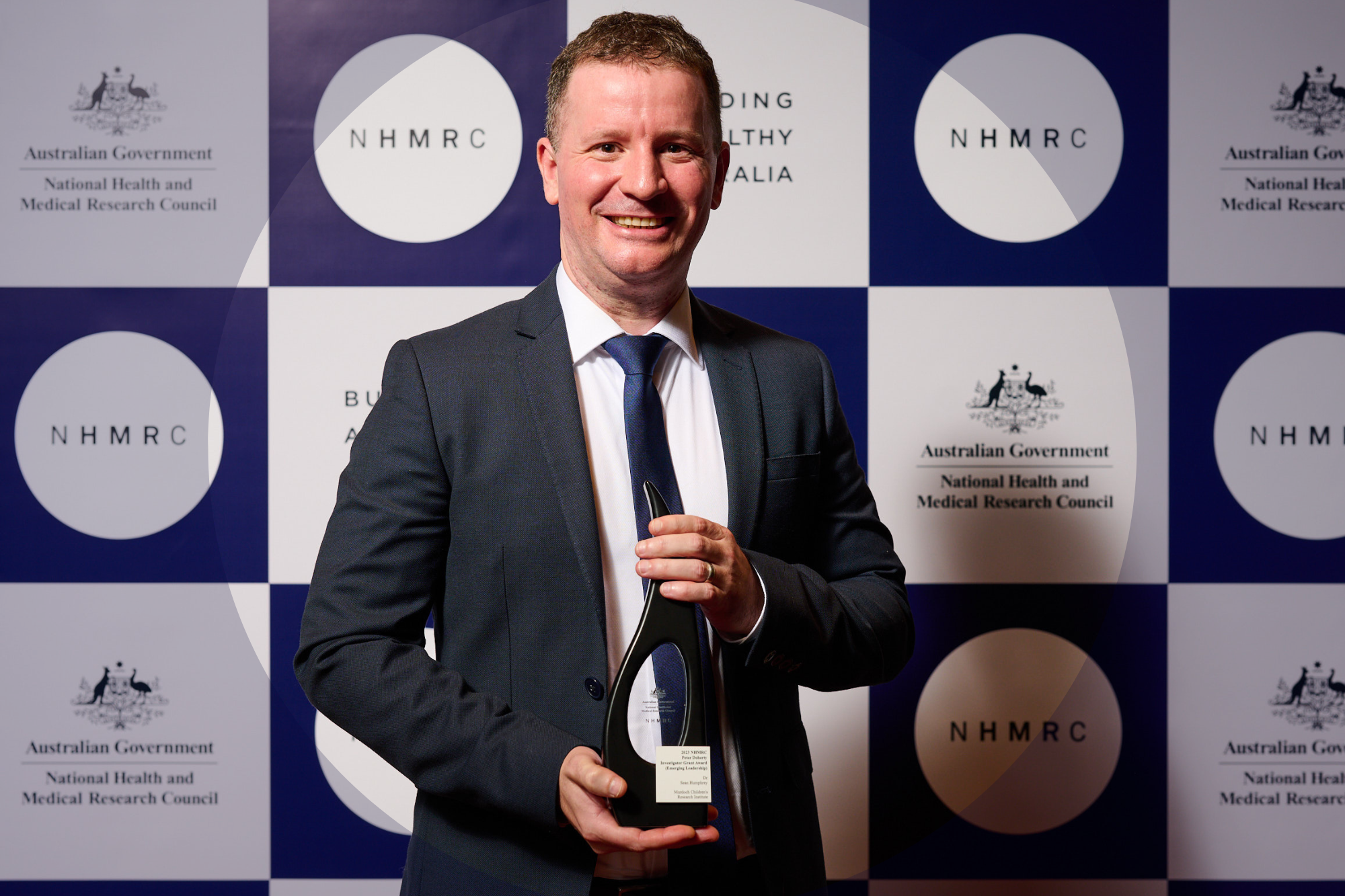Dr Sean Humphrey leads the Functional Phosphoproteomics Laboratory at the Murdoch Children’s Research Institute. Dr Humphrey’s research uses cutting-edge mass spectrometers to create detailed molecular maps that capture how cells communicate and process information by regulating proteins. Dr Humphrey completed his PhD at the University of New South Wales before moving to Germany to undertake post-doctoral training at the Max Planck Institute of Biochemistry in Munich. Dr Humphrey’s research pinpoints key molecular signals that are dysregulated in human disease, uncovering a myriad of new targets for future therapies.
Since a young age I have been fascinated with how things work. Biology provides a multitude of wonderfully complex systems, from whole organisms down to the molecular reactions powering the cells that comprise them. My desire to understand the mechanisms that underpin life led me to a degree in pharmacology.
The profound and seemingly disproportionate effects that drugs can exert on an organism captivates me, and understanding what makes certain drugs such effective therapies continues to drive much of my research today.
My desire to understand how biological systems work on molecular level led me to a PhD in Biochemistry. I was fortunate to find PhD and postdoctoral supervisors – now mentors – in David James (Sydney University) and Matthias Mann (Max Planck Institute of Biochemistry) who share my passion for discovery, encouraged me to nurture this curiosity, and equipped me to follow my interests.
Guided by fruitful interactions with colleagues in their labs, I was introduced to mass spectrometry and the remarkable ability of this technology to unveil new aspects of the cell. In particular, the functional units of cells – proteins.
Using mass spectrometry to study proteins feels a bit like peering into a telescope at a patch of seemingly dark sky, only to be greeted by an entire field of previously undiscovered galaxies.
One fascinating thing about proteins is the myriad of ways that their function can be regulated. Cells decorate these miniature molecular machines with many different chemical modifications, such as sugars (‘glycosylation’) or phosphate molecules (‘phosphorylation’), often with drastic changes to function. Over the past few decades, it has become clear that protein phosphorylation is instrumental to almost all biological processes. Consequently, dysregulated phosphorylation is also a hallmark of many diseases, including cancer.
My research uses cutting-edge technology to study the role of protein phosphorylation in health and disease. By combining advanced mass spectrometry instrumentation with breakthrough biochemical techniques and sophisticated software, we can generate intricate maps of almost all proteins in human cells (over 10,000 different molecules!). We can also pinpoint many tens of thousands of sites of phosphorylation on them.
This allows us to comprehensively compare the function of healthy and diseased cells, and to zoom in on key areas that are dysregulated at the protein level. This is particularly relevant to the discovery of new drugs to treat complex diseases, because around 95% of drug targets are proteins.
This is an exciting field of research to be in because the pace of technological advancement driving protein-level analysis is astonishing, outstripping advances seen in the development of genomic sequencing technologies in recent years.
Being awarded an Investigator Grant is a significant achievement that will allow me to focus my laboratory’s efforts in applying these technologies towards understanding the mechanisms underlying medulloblastoma, paving the way for innovative treatments for this devastating disease. As well as understanding how these cancer cells are dysregulated, our work will pinpoint molecular vulnerabilities in medulloblastoma, revealing how to design effective new therapies.
I am extremely grateful to receive this award recognising the importance of this work. This is testament to the invaluable support I have received from my peers and mentors, both across Australia and globally. I want to extend my gratitude to the Murdoch Children’s Research Institute, and philanthropic funding from the Stafford Fox Medical Research Foundation and the Estate of Patricia Mary Gleeson, which have enabled me to establish a world-class mass spectrometry laboratory at the Institute.
This award emphasises that continued investment in infrastructure and people supporting fundamental, discovery research is vital to the development of new therapies and to the future health of the nation.
